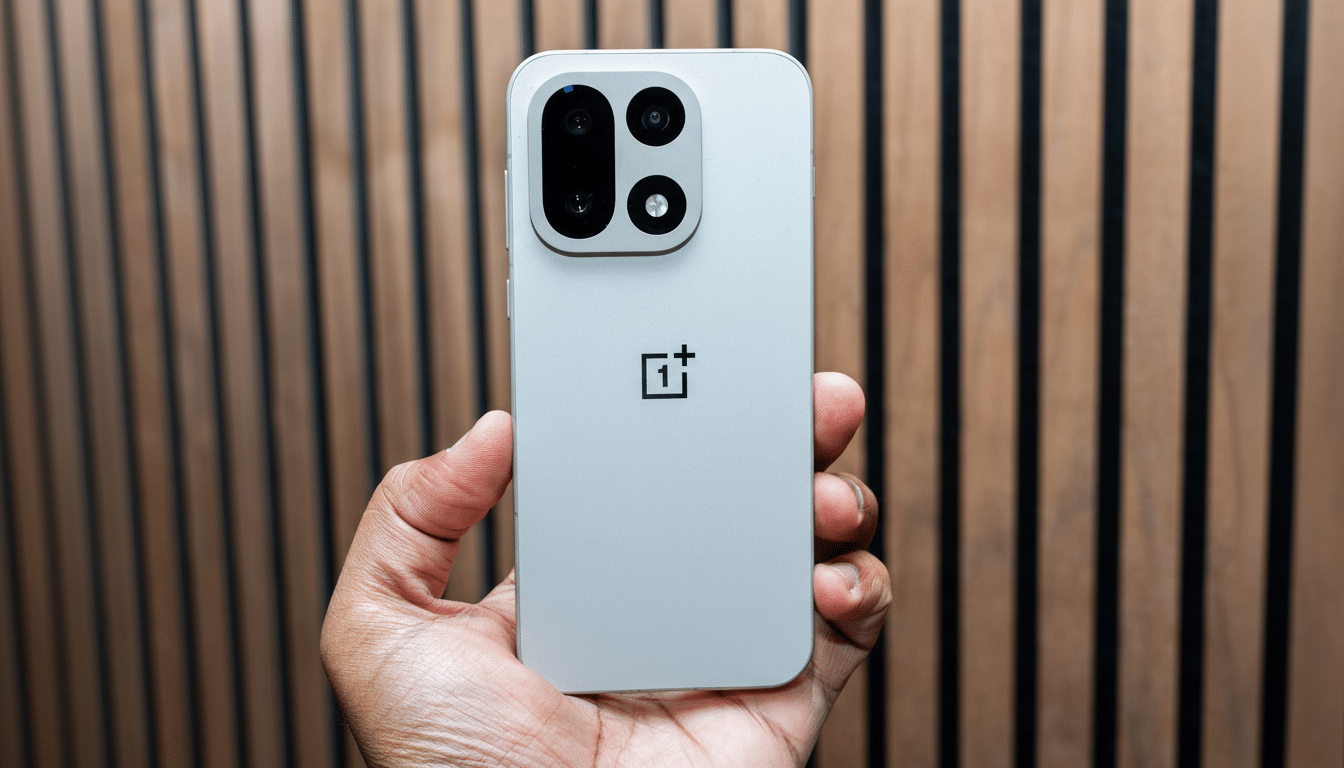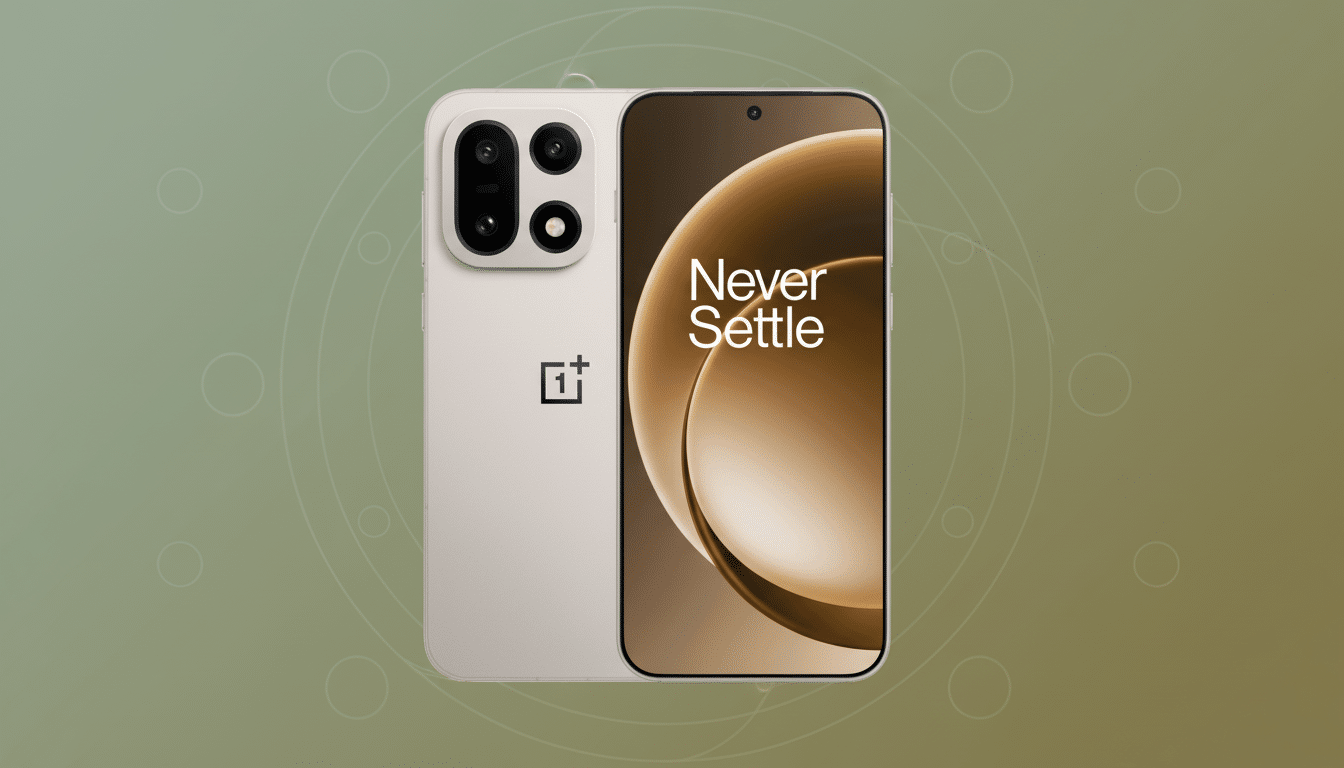The OnePlus 15 is touching down in extra countries earlier than planned, and it comes with a new look, faster charging speeds, and a price that undercuts most of the competition. While Samsung’s Galaxy S26 Ultra is coming closer, already the credible leaks are hinting at established strengths and a couple of key improvements. If you’re struggling to decide whether or not to buy now vs. wait, the answer depends more on priorities than spec sheets alone.
Battery and Charging Could Be the Difference Here
OnePlus is clearly making a big bet on battery life. The 15 carries a biggish 7,300mAh silicon‑carbon dual-cell battery — of a chemistry that’s intended to reduce capacity fade. Guidance from the company indicates a four-year lifespan of about 80%, which seems to match what we’ve seen out of silicon‑carbon industrial testing. So the headline is you’re looking at 80W wired and 50W wireless charging, and yes: OnePlus will have its fast charger in the box — which is still a bit of a win for 2025.
- Battery and Charging Could Be the Difference Here
- Performance and Thermals Under Sustained Workloads
- Cameras and Imaging Trade-Offs for Different Users
- Display Design and Extras That Set Each Phone Apart
- Software Support, Update Policies, and On-Device AI
- Price, Launch Deals, Trade-Ins, and Long-Term Resale
- Bottom Line for OnePlus 15 Versus Galaxy S26 Ultra

Samsung typically lags behind on charging speeds in return for prudent battery management. The Galaxy S26 Ultra is rumored to step up to 60W wired, but nothing is confirmed yet. If you prioritize time-to-full and plug‑in flexibility, OnePlus wins hands down today. Older OnePlus flagships at the same wattages consistently saw sub‑30‑minute fills based on internal lab data and third-party reviews.
Performance and Thermals Under Sustained Workloads
The OnePlus 15 is powered by Qualcomm’s latest top‑tier silicon with up to 16GB RAM, and early stress tests suggest that it will maintain strong performance over long periods. Horsepower is complemented by aggressive cooling, high power ceilings — among the highest in the industry for sustained performance — and fast flash storage. Think console‑smooth gameplay matched with a 165Hz LTPO display that dials back power when not in use.
Typically Samsung receives a “for Galaxy” custom Snapdragon variant in its Ultra models, which are tuned more for high burst clocks and much tighter near-supply integration with Samsung’s image pipeline as well as AI features. If that holds, then the S26 Ultra will match or eclipse it in short bursts. The one open question is heat: phone makers have been exchanging peak numbers in order to run cooler over time, and OnePlus’ thermal strategy has been really good these past two generations.
Cameras and Imaging Trade-Offs for Different Users
On the page, however, the OnePlus 15 takes a pragmatic approach: three 50MP sensors (wide/ultrawide/3.5x periscope tele) and a Sony main sensor with fast focus and color consistency as the main attention points. OnePlus got rid of the Hasselblad co‑branding, but tuning is neutral and fast (something that photographers tend to appreciate).
The S26 Ultra should retain a 200MP main, 50MP ultrawide, and a longer 5x telephoto. Samsung’s strong points are computational imaging — detail‑laden daylight images with good edge detection in portraits and decent handling of low‑light noise. With Expert RAW, solid Pro modes, and a legacy of strong DxOMark and independent lab results, Samsung remains the one to beat for camera nerds along with people who zoom really frequently.
Display Design and Extras That Set Each Phone Apart
The OnePlus 15 features an ultra‑low latency 1.5K LTPO panel at a refresh rate of up to 165Hz. It’s bright, it hits the right colors, and it’s tuned for gaming fluidity. The compromise is resolution: it’s not full QHD. OnePlus also includes the type of handy touches you seldom find in flagships these days, such as an IR blaster and a reprogrammable side button in lieu of the old alert slider.
Samsung is likely going to stick with a QHD LTPO panel at 120Hz, probably with the ultra‑hard Gorilla Armor or whatever comes next, and S Pen integration.

And if you like to annotate documents, sketch, or sign PDFs, you’ll appreciate the built-in stylus, which remains a useful differentiator. Samsung’s industrial design is also the same year to year, which some users value.
Software Support, Update Policies, and On-Device AI
OnePlus is also promising four Android version upgrades and six years of security patches. OxygenOS has become more iOS‑like to navigate, but there’s plenty of deep user customization, and the company has been leaning into on‑device AI features covering transcription (to make a written note from voice), summary creation, and image tools.
Samsung led the way with seven years of OS and seven years of security updates on its most recent flagships, and has doubled down on Galaxy AI for translation, note‑taking, and camera wizardry. And if you plan to retain that phone beyond five years — and IDC has noted that replacement cycles are stretching longer — it’s hard to beat Samsung’s policy, something enterprises put a premium on.
Price, Launch Deals, Trade-Ins, and Long-Term Resale
The OnePlus 15 is available starting at $899, an excellent value for its class. We don’t know the Galaxy S26 Ultra’s price yet, but the S25 Ultra started at $1,299 — and Samsung almost never heads downmarket at the high end. There will be aggressive trade‑ins and carrier promos that can help close the gap at launch, particularly in the US, where handset subsidies are still very much a thing, according to Counterpoint Research.
Another thought: If you hold off until the S26 Ultra is announced, there’s a good chance that you’ll see discounts on S25 Ultra stock. If Samsung’s camera and S Pen appeal to you, but you want to spend less money, that timing could be your sweet spot.
Bottom Line for OnePlus 15 Versus Galaxy S26 Ultra
Get the OnePlus 15 if you want maximum battery life, leading‑edge performance, and truly fast charging with a power brick included — oh, and a lower price of entry. It’s the power user’s play, with gamer‑friendly display tech and a few intelligent hardware extras.
Hold out for the Galaxy S26 Ultra if you value the ultimate all-round camera package, S Pen workflows, QHD resolution, or class‑leading software longevity. At the very least, holding out for a bit can further clarify specs and drive down S25 Ultra prices, giving you better options without costing more.

